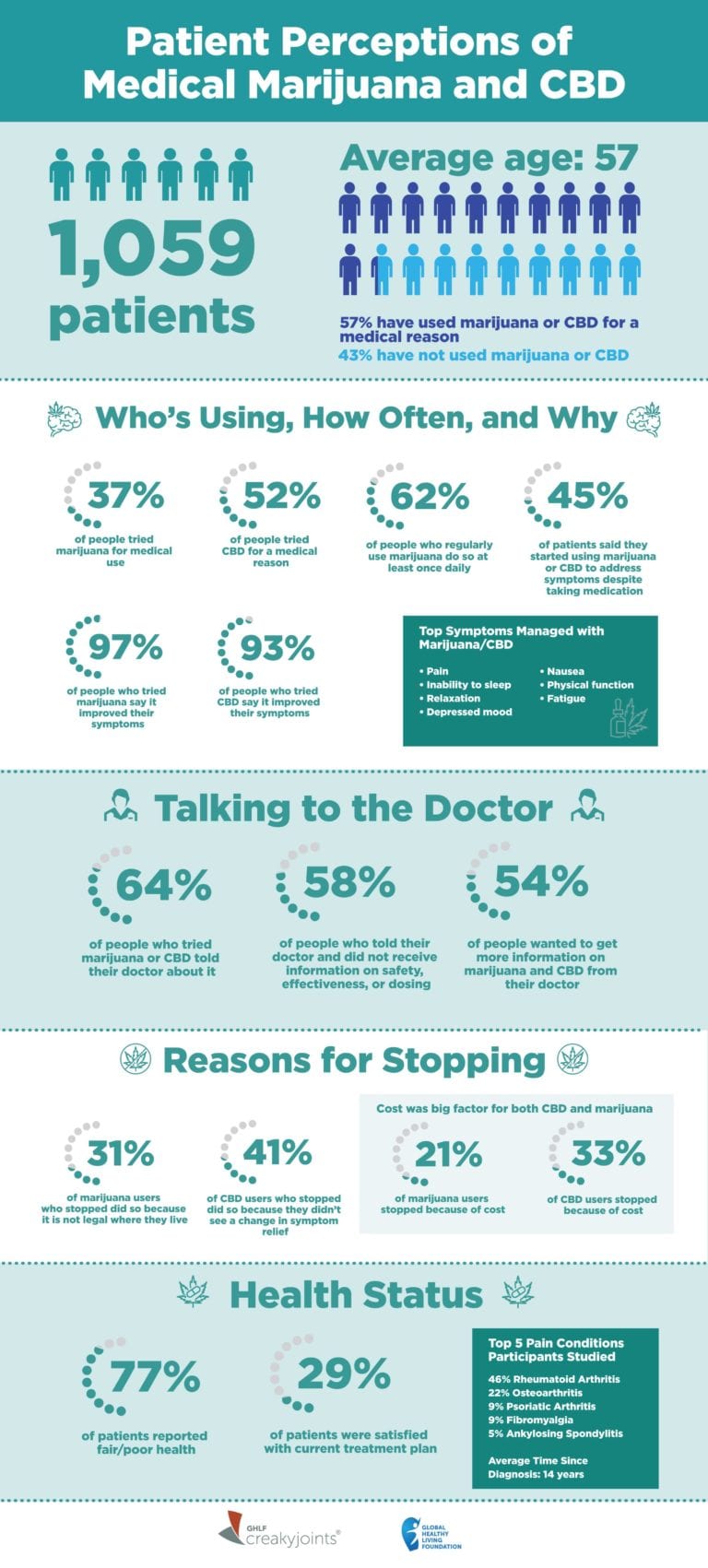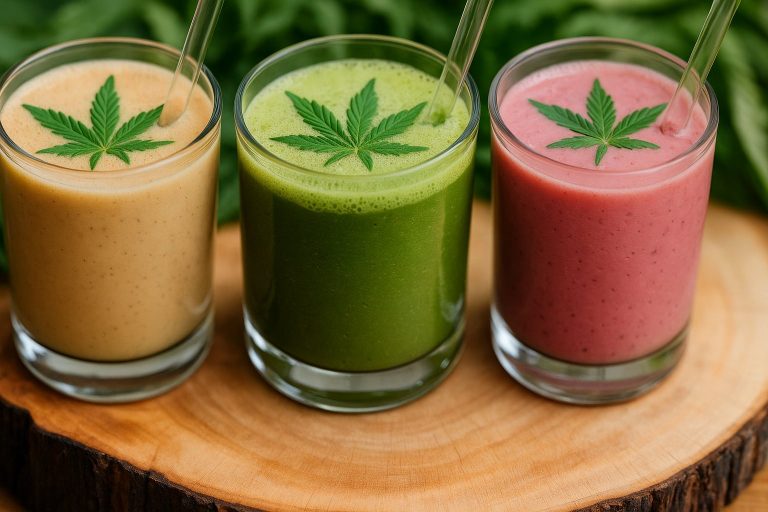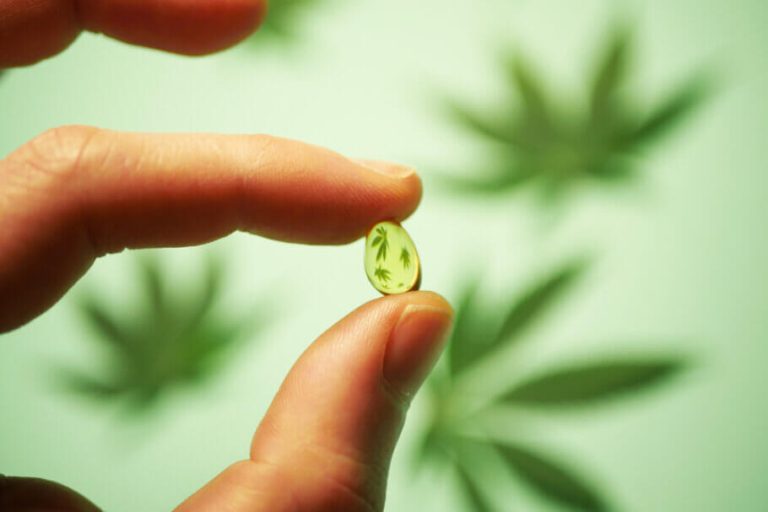Is it true we can use CBD for chronic pain and inflammation? It’s certainly something millions have already turned to. But what does the science say? In this article, we’ll delve into the science of how CBD interacts with the human endocannabinoid system to achieve the intended effects. We’ll reference studies to better understand its efficacy. We’ll look at best practices for using CBD and highlight CBD’s role as part of a holistic healing and pain management program. Currently, the most common use for CBD is for treating chronic pain and arthritis. Hopefully, this article will serve as a good introduction for those thinking about using CBD oil for pain.
Full Disclosure: Linked products in this article point to items for sale in our shop.
The Science Behind How CBD Treats Pain
Humans have been using cannabis as medicine for over 4,000 years for everything from arthritis to epilepsy to anxiety to menstrual cramps by everyone from the ancient Egyptians, Chinese, Ayurvedic healers and even the Queen of England’s own doctor.
Unfortunately, prohibitions on cannabis in both the US and Canada in the early 20th century hobbled the medical community’s ability to study it just as a scientific revolution in medicine was getting underway. Fortunately, with the legalization of CBD oil in Canada and in multiple US states, research into CBD’s medical applications has resumed. That being said, it’s still early days in CBD science and far more research needs to be done, but what we’re learning so far is tremendously encouraging.
Of all the reasons people use CBD, chronic pain is the most common. According to a recent survey of over 2400 people by the The Center for Medical Cannabis Education, out of the 62 percent of people who said they use CBD to treat a medical condition, most said they use CBD to manage chronic pain, arthritis and joint pain.
But how does it work?
CBD’s role in eliminating pain is multifaceted. For example, one way CBD works is by inhibiting the release of inflammatory agents like glutamate, this is what makes it “neuroprotective.” CBD excels at dulling the burning, tingling and prickling sensations of neuropathic pain, especially when combined with other natural supplements such as magnesium glycinate.
Another way CBD works is by inhibiting the absorption of anandamide, a natural cannabinoid that regulates pain and is linked with feelings of well-being and happiness. CBD enhances anandamide signalling and helps reduce pain throughout the body.
Researchers have also found that CBD targets alpha-3 glycine receptors to suppress chronic pain and reduce inflammation. Dysfunctional glycine receptors—which play a big role in how our bodies process pain—can cause a lot of problems.
CBD also alleviates pain by activating the receptor proteins responsible for controlling inflammation and the awareness of pain, such as the vanilloid receptor TRPV1. A 2014 study published in the British Journal of Pharmacology found that TRPV1 mediates CBD’s pain-relieving properties, leading the research team to conclude that CBD could be a “useful pharmacological alternative in the treatment of the disease-associated chronic pain.”
Is there proof it works?
The results, though preliminary, are encouraging. Numerous experiments are starting to demonstrate CBD’s effectiveness in treating pain and inflammation. In a 2016 animal study published in the European Journal of Pain, various dosages of transdermal CBD gel were administered to lab rats induced with arthritis. They found that 6.2-milligram and 62.3-milligram dosages were effective in reducing both the inflammation and pain of arthritis.
A 2017 study published in the Journal of Pain found that CBD treatment prevented the development of joint pain and nerve damage in rats induced with osteoarthritis. Additionally, a peer-reviewed research paper published in the British Journal of Pharmacology found that CBD alleviated severe neuropathic pain caused by chemotherapy in cancer patients. There’s also evidence that CBD relieves pain from multiple sclerosis.
These and other results explain why pharmaceutical companies are jumping on board. Sativex, a cannabis-based pharmaceutical product, has already been approved in multiple countries to treat neuropathic pain, multiple sclerosis-related muscle spasms as well as severe pain from advanced cancer. It is currently being evaluated in clinical trials in the US.
How to use CBD oil for pain
There are many ways to use CBD for pain in Canada, and anywhere else it’s legal. First think about the kind of pain you’re treating, familiarize yourself with your options, and then do a little experimenting. Whether you decide to take CBD topicals, edibles, oils or something else, the general rule is “start low, go slow.” Start with the minimum dose and gradually increase the amount of CBD until you find the dose that is most effective for you.
 Remember that with CBD, increasing the dose won’t necessarily increase the pain relief. CBD is biphasic and the effects change when doses change, it’s not simply a matter of increasing the effects by increasing the dose. That’s why doctors strongly suggest you keep a daily journal of your doses over the course of a month. Start with a small dose, for example 10mg, and gradually increase it every few days. Record the effects you feel with each dose. At the end of the month evaluate which dose appeared to work best for you.
Remember that with CBD, increasing the dose won’t necessarily increase the pain relief. CBD is biphasic and the effects change when doses change, it’s not simply a matter of increasing the effects by increasing the dose. That’s why doctors strongly suggest you keep a daily journal of your doses over the course of a month. Start with a small dose, for example 10mg, and gradually increase it every few days. Record the effects you feel with each dose. At the end of the month evaluate which dose appeared to work best for you.
For localized pain, as in the case of muscle spasms and arthritis pain, it might be advisable to try a CBD-infused balm, transdermal patch, or even to apply CBD oil directly to your skin. While CBD has limited bioavailability when ingested, CBD has longer lasting therapeutic effects when absorbed through your skin.
To get CBD to your brain, the best way is to use a dropper and put a few drops under your tongue. There’s a very high concentration of blood vessels there and it’s close to the brain. Don’t swallow right away, leave it under your tongue 30-90 seconds. If ingested immediately, much of the CBD you’ve taken will be filtered out by your liver.
There are, however, some instances in which ingesting CBD is preferable. If you want it released into your system gradually over time, ingesting it in CBD pill form may be preferable. The process of digestion and filtering through the liver slows CBD’s release throughout your body.
Many people also use a combination of methods, for example taking CBD both topically on their skin and taking a few drops under their tongues. CBD is non-toxic and there are no recorded cases of overdoses, but generally speaking you should keep your daily intake to between 20mg-1500mg per day.
When buying CBD, consider trying a full spectrum CBD oil, not only will you get the full “entourage effect” from all the other terpenes, flavonoids and cannabinoids. Some people, for professional and health reasons alike, don’t want any THC in their oil whatsoever. In these cases, it’s possible to purchase 100% cbd oil, or even 100% cbd isolate extract–the raw cbd they later blend with MCT oil to create CBD oil.
How Does CBD Treat Inflammation?
Inflammation happens naturally when our bodies fight infections and heal injuries. But when chronic inflammation occurs, the immune system goes from healing us to producing damaged cells and free radicals—precursors to a host of ailments, including cancer.
Although chronic inflammation isn’t always easy to sense or diagnose, it doesn’t make it any less dangerous.
In the last few decades, scientists have linked chronic inflammation to a host of diseases and health conditions. In fact, it’s currently estimated that up to 20% of cancer cases are caused by chronic inflammation. Other health conditions like Alzheimer’s aren’t necessarily caused by inflammation, but people with Alzheimer’s have elevated inflammatory markers — and that inflammation increases both the severity and speed of cognitive deterioration.
Health conditions and diseases we know are linked to inflammation include:
- Cancer
- Heart disease
- Diabetes
- Alzheimer’s disease
- Osteoporosis
- Periodontitis
- Asthma
- Rheumatoid arthritis
- Depression
One of the most popular therapies doctors recommend for those at risk of heart attack is a daily aspirin. Aspirin is an an anti-inflammatory that works by inhibiting your body’s production of inflammatory prostaglandins. Fortunately, that’s something that CBD oil does too, specifically by inhibiting the enzyme COX-2—the one responsible for the production of prostaglandins.
Scientists think CBD combats inflammation in a variety of other ways too. Based on studies conducted on rodents, CBD likely protects joints against inflammatory arthritic damage by reducing the production of inflammatory tumour necrosis factor (TNFα).
CBD also influences a wide variety of molecules by stimulating the PPARγ receptor—the one responsible for telling your DNA to change which genes it expresses. The PPARγ receptor is involved in both reducing production of inflammatory molecules as well as increasing production of antioxidants. This is why researchers believe CBD may have potential for treating Alzheimer’s, multiple sclerosis, ulcerative colitis and a host of other diseases and conditions too.
CBD’s effectiveness in treating arthritic pain is supported by patient testimony. In a poll conducted by arthritis support group CreakyJoints.org, of the 57% of arthritis patients that tried marijuana or CBD for medical reasons, more than 90% say it helped.
CBD; Part of Holistic Healing
Thanks to recently relaxed laws in Canada, CBD oil for pain and inflammation is now an option. However, CBD works best as part of a holistic lifestyle that avoids inflammatory agents while opting for an anti-inflammatory diet and activities. Some scientifically-backed ways to control inflammation include:
- diets high in raw foods, vegetable and whole grains like the Mediterranean diet. Meat, sugars, simple carbs and processed foods are highly inflammatory.
- omega-3 fatty acids, especially EPA and DHA, which are abundant in fish and algae.
- low-impact exercises like cycling, yoga, pilates, water sports and tai chi.
Remember that CBD can interact with other medicines. Even though the science is exciting, don’t get ahead of yourself. Make sure to consult your doctor, especially if you are already on medication as CBD can interfere with other medications.
Medical disclaimer: This information does not constitute medical advice and it should not be relied upon as such. Consult with your doctor before modifying your regular medical regime.
Learn more about CBD

CBD and Stress: How Cannabinoids Help You Stay Calm in a Busy World
If it feels like life keeps getting louder and faster, you’re not alone.Between deadlines, notifications, and never-ending to-do lists, most of us are
read more
CBD Smoothie Recipes You’ll Actually Love
🥤 Simple, delicious ways to enjoy your daily CBD oil. Why Add CBD Oil to Your Smoothie? Smoothies are already a great way to
read more
A Calm Routine: How to Use CBD Skincare from Morning to Night
If your skincare shelf is starting to look more like a science lab, you’re not alone. These days, there’s a serum or cream
read more
From Mouse to Marathon: Can CBD Support Endurance Through the Gut?
Gut health has become a growing focus in the wellness world, and for good reason. The gut microbiome affects digestion, immunity, and even
read more
Microdosing CBD: Why Less is More
Many assume that more CBD means better results, but that’s not always true. Instead, taking smaller doses more frequently may be a smarter
read more
Sleep Naturally: How CBD, CBG, and CBN Can Enhance Your Rest
Quality sleep is essential, yet modern lifestyles often leave us restless. With rising stress levels and digital distractions, many are turning to natural
read more
